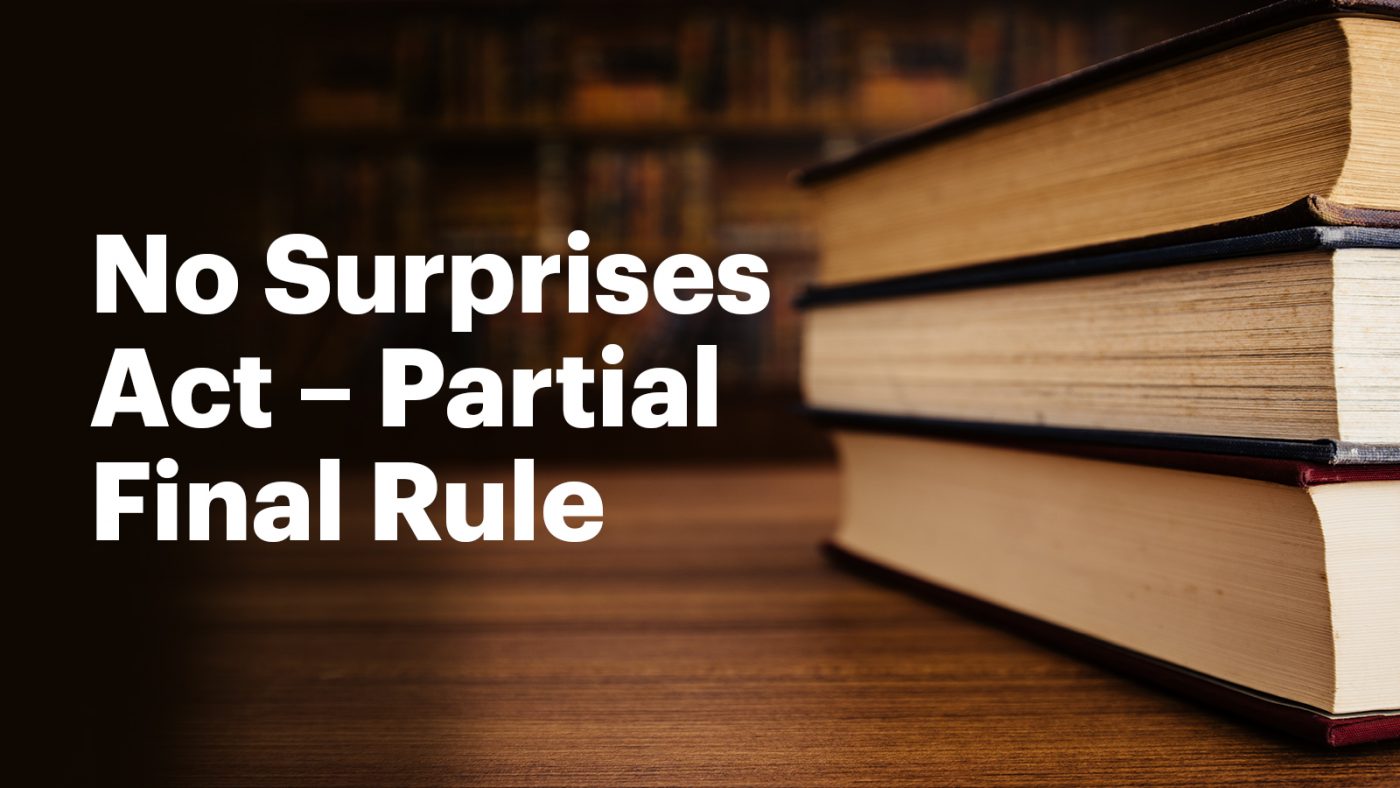In July 2021, the U.S. Departments of Treasury, Labor, and Health and Human Services [the Departments] released an Interim Final Rule, “Requirements Related to Surprise Billing, Part I”. In October 2021, the Departments released a second Interim Final Rule, “Requirements Related to Surprise Billing, Part II”. On August 26, 2022, a Final Rule regarding “Requirements Related to Surprise Billing” was published in the Federal Register and took effect October 25th, 2022.
This August 2022 Final Rule only addressed two topics:
1) Information that a plan or issuer must share about the qualifying payment amount (QPA) when a service is downcoded; and
2) The factors that a certified independent dispute resolution (IDR) entity will consider in making a payment determination.
QPA and downcoding
In situations where a plan or issuer has downcoded a billed claim and asserts that the QPA which corresponds with the downcoded claim is the correct total payment amount, the provider, facility, or provider of air ambulance services must be made aware that the item or service has been downcoded and provide information regarding both the QPA for the downcoded claim and the amount that would have been the QPA had the service code or modifier not been downcoded. The logic behind this rule is the belief that this information may be critical to the provider, facility, or provider of air ambulance services in developing an offer or submitting information if it believes the QPA calculated by the plan or issuer does not best represent the value of the item or service provided.
The Final Rule defines “downcoded” to mean “the alteration by a plan or issuer of a service code to another service code, or the alteration, addition, or removal by a plan or issuer of a modifier, if the changed code or modifier is associated with a lower QPA than the service code or modifier billed by the provider, facility, or provider of air ambulance services.”
In addition to the information already required to be provided with an initial payment (or denial of payment), the Final Rule requires a plan or issuer to provide:
1) A statement that the service code or modifier billed was downcoded; and
2) An explanation of why the claim was downcoded, including a description of which service codes were altered, added, or removed, in any; and
3) QPA had the service code or modifier not been downcoded.
Independent Dispute Resolution (IDR) Process and Payment Determinations
The final rule addresses certain requirements related to the consideration of information when a certified independent dispute resolution (IDR) entity makes a payment determination under the Federal IDR process.
Under the Final Rule, the certified IDR entity is not required to select the offer closest to the QPA. Rather, the certified IDR entity should select the offer that best represents the value of the item or service under dispute after considering the QPA and all permissible information submitted by the parties. For non-air ambulance items and services, additional information to be considered (in addition to the QPA) includes:
1. The level of training, experience, and quality and outcomes measurements of the provider or facility that furnished the qualified IDR item or service;
2. The market share held by the provider or facility or that of the plan or issuer in the geographic region in which the item or service was provided;
3. The acuity of the individual receiving the item or service, or the complexity of furnishing the item or service to the individual;
4. The teaching status, case mix, and scope of service of the facility that furnished the item or services; and
5. The demonstration of good faith efforts (or lack thereof) made by the provider or facility or the plan or issuer to enter into network agreements with each other, and (if applicable), the contracted rates between the provider or facility and the plan or issuer as applicable, during the previous 4 plan years.
6. Other information provided in response to a request from the certified IDR entity.
More weight cannot be given to information already factored into the QPA. If parties submit information related to more than one of the additional 5 factors, the IDR entity is to consider whether the information is related to information in another factor and not weigh it more than once.
Additionally, factors the IDRs must consider which element impacts the QPA to include regarding “additional information” or “additional circumstances” submitted for review, and IDRs are always to consider the QPA without the parties bringing it to the IDR’s attention. The rationale behind this consideration is that “it [QPA] is the one statutory consideration that will always be present in each payment determination…”
Lastly, although the Final Rule rolls back the presumption that the QPA is the correct payment amount, the Final Rule does not require the IDR to default to the offer closest to the QPA or to apply a presumption in favor of that offer, emphasizing (suggesting) again that all information need not be given equal weight.
Independent Dispute Resolution’s Written Decision
As a result of the Texas Medical Association decision, the Final Rule expands the written decision requirements to provide that a written decision must now include an explanation for its decision in all cases, and not only when the offer furthest from the QPA is selected. Under separate guidance, the Departments will specify the form and manner for all written decisions. Note that the Final Rule also requires that, if the certified IDR entity relies on additional information or circumstances in selecting an offer, its written decision must include an explanation of why the certified IDR entity concluded that this information was not already reflected in the QPA.
How to prepare
Take a look at the Final Rule and begin conversations internally about what this determination might mean for your organization. Still have questions? Rivet Health Law, PLC can help. Contact us for more information.

